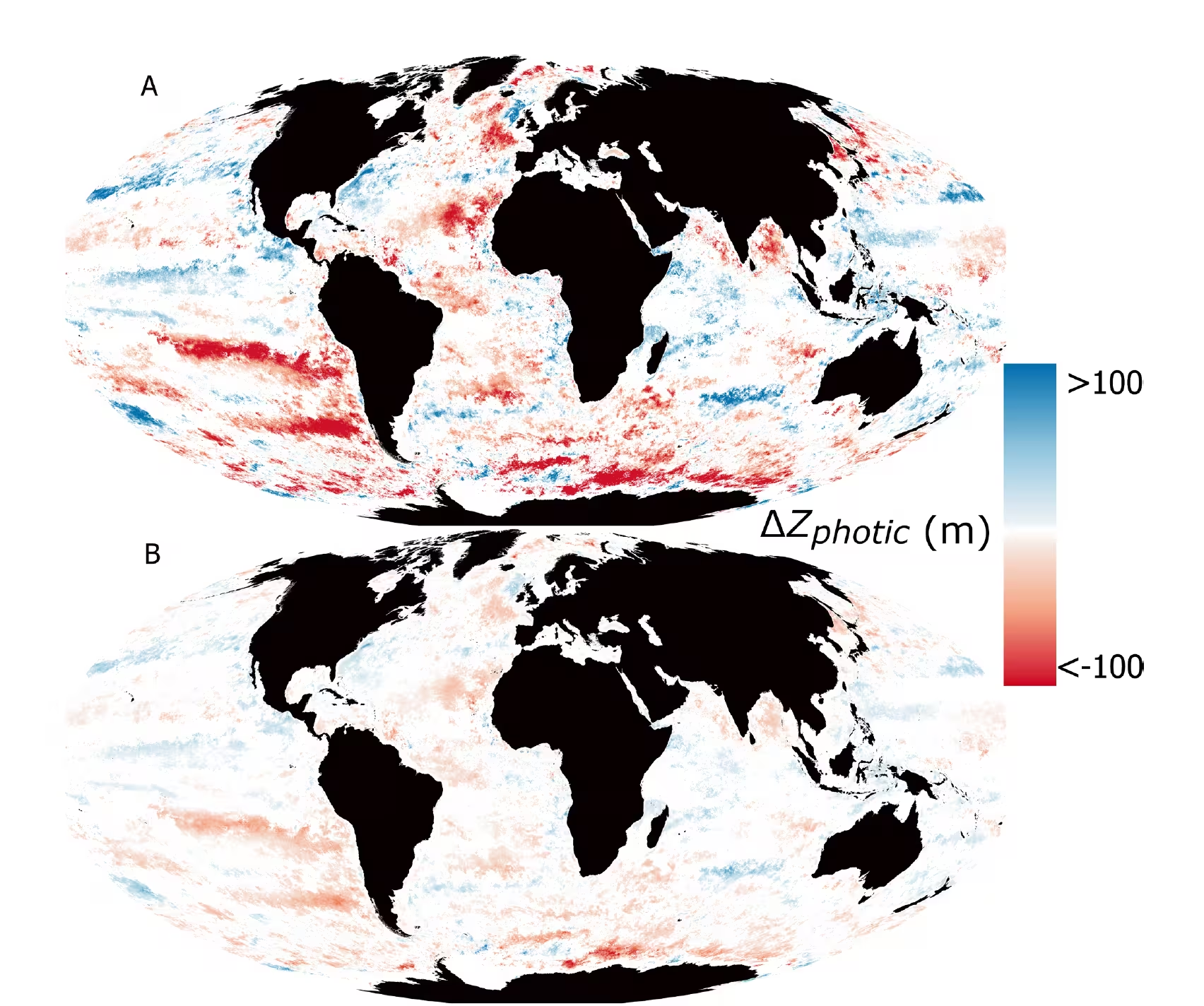4 Minutes
The Critical Role of Sunlight in Ocean Ecosystems
Sunlight is the lifeblood of our oceans, powering the vast webs of marine life that rely on a thin upper layer known as the photic zone. This sunlit stretch, which typically extends from the surface down to 80 meters in clear tropical waters, enables the photosynthesis essential for oceanic food chains. Here, phytoplankton, seagrasses, and kelp harness solar energy to produce oxygen, forming the base of nutrition for fish, corals, crustaceans, and marine mammals. Yet, recent scientific findings reveal an alarming trend: the ocean’s photic zone is shrinking on a global scale, threatening the balance of entire marine ecosystems.
New Research Unveils Widespread Ocean Darkening
A groundbreaking study led by marine scientists Dr. Thomas Davies (University of Plymouth) and Dr. Tim Smyth (University of Exeter) has now quantified the extent of this phenomenon. By analyzing NASA satellite data spanning 2003 to 2022, coupled with advanced numerical modeling, the researchers discovered that over the past two decades, more than 20% of the world’s oceans have grown significantly darker. In nearly 10% of ocean regions, the photic zone has contracted by more than 50 meters, while 2.6% have lost in excess of 100 meters of accessible light. These losses drastically shrink the available habitat for light-dependent species, forcing marine life into more confined and competitive spaces.
Expert Insights Highlight Ecosystem Risks
“There has been research showing how the surface of the ocean has changed color over the last 20 years, potentially as a result of changes in plankton communities,” Dr. Davies notes. “Our results provide evidence that such changes cause widespread darkening, reducing the habitat for animals that rely on sunlight and moonlight for survival and reproduction.” Dr. Smyth adds, “If the photic zone is reducing by around 50 meters in large areas, animals that need light will be forced closer to the surface, where they must compete more intensely for food and other critical resources.”

Why Is the Ocean Getting Darker?
The depth and clarity of the photic zone depend on multiple factors, including the angle and intensity of sunlight, water clarity, and the quantity of suspended particles. In equatorial regions where the sun’s rays hit directly, light can penetrate deeper, supporting rich and diverse marine habitats. However, as water becomes clouded with suspended sediments, organic material, and blooms of microscopic algae, light struggles to reach deeper layers.
Recent studies highlight the role of eutrophication—an increase in nutrient runoff from agriculture and urbanization—which feeds explosive growths of phytoplankton and algae. While these blooms initially increase primary productivity, they ultimately block sunlight from penetrating to greater depths, particularly near coastlines and estuaries. Additionally, changes in global ocean circulation, driven in part by shifting climate patterns, are altering the distribution of these light-blocking substances across vast oceanic regions.
Regional Variations and Climate Change Consequences
While one might expect such "ocean darkening" to be a local issue, confined to polluted coastal waters or areas of intensive human activity, satellite models indicate a global spread. The Gulf Stream, the polar seas, and even remote mid-ocean gyres have shown marked declines in photic zone depth. In the polar Arctic and Antarctic waters, the naturally narrow band of sunlight—less than 10 meters deep in places—is under even greater pressure, with thickening algae and sediments accelerating habitat loss.
One stark example is the widespread algal blooms recently recorded around Australia’s Great Southern Reef, events that have led to mass die-offs as sunlight becomes too scarce to sustain foundational species.
Implications for Climate, Biodiversity, and Human Wellbeing
The consequences of a darkening ocean are far-reaching. As photosynthetic organisms decline, so too does the ocean’s capacity to produce oxygen and sequester atmospheric carbon dioxide—weakening Earth’s natural defenses against climate change. Diminished photic zones could also impact global fisheries, marine biodiversity, and the livelihoods of coastal communities worldwide.
“We also rely on the ocean and its photic zones for the air we breathe, the fish we eat, our ability to fight climate change, and the general health and wellbeing of the planet,” Dr. Davies remarks. “Taken together, our findings represent a genuine cause for concern, highlighting the importance of continued ocean monitoring and effective environmental stewardship.”
Conclusion
The rapid darkening of Earth’s oceans, validated by satellite science and marine research, signals a profound shift in marine environments. As the photic zone shrinks and sunlight penetrates less deeply into the world’s waters, the intricate balance of ocean ecosystems is under threat. Addressing this challenge requires global attention to pollution, nutrient runoff, and climate change—essential for preserving marine life, supporting global fisheries, and maintaining planetary health in an era of uncertainty.



Comments